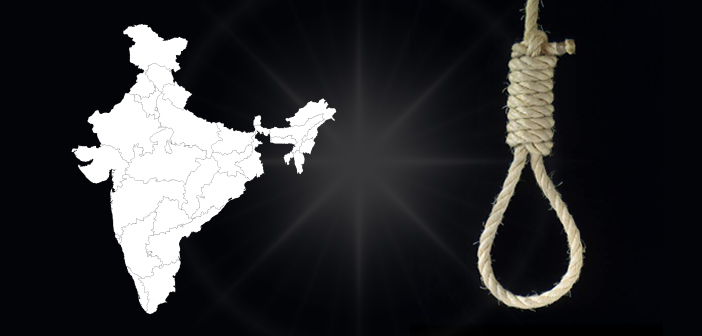“Capital punishment is not a matter of whether individuals deserve to die for the crimes they’ve committed. Instead, the fundamental question about capital punishment in our country is whether we, as a society, deserve to take a life. Various forms of punishment exist to deter wrongdoing and reduce crime rates. In India, these penalties include capital punishment, life imprisonment, imprisonment, fines, and others. Capital punishment, or the death penalty, is reserved for the most heinous and rare cases of criminal offenses.
In India, capital punishment is administered under the authority of High Courts, which confirm death sentences according to Section 368 of the Criminal Procedure Code, 1973. The death penalty is strictly reserved for the gravest and rarest of cases in the country.
It’s worth noting that during the United Nations General Assembly’s call for a global prohibition on the death penalty, India voted in favor of such a resolution.
In India, there are two methods of execution:
- Hanging is the primary method of execution in post-independence India. The country’s Apex Court has recommended that the death penalty be imposed only in the rarest of rare cases.
- Shooting on the other hand is also permitted under the Army Act and The Air Force Act of India. Section 34 of The Air Force Act, 1950, empowers court-martial to pass the death penalty for individuals who commit unlawful acts against the law.”As per Section 34 of The Air Force Act, 1950 provides the power of the court-martial of any person who commits any act that is unlawful and against law.
Provisions of IPC in Capital Punishment of Death Penalty:
| Sections under IPC | Nature of crime |
| 121 | Waging, or attempting to wage war, or abetting waging of war, against the Government of India |
| 132 | Abetment of mutiny, if mutiny is committed in consequence thereof. |
| 194 | Giving or Fabricating False Evidence with intent to procedure on conviction of a capital offence |
| 195A | Threatening or Inducing any person to produce or falsely evidence resulting on the conviction and death of an innocent person |
| 302 | Murder |
| 305 | Abetment of Suicide of a Minor or Insane person |
| 376A | Rape and Injury which causes death or leaves women in a Persistent stage |
| 376AB | Rape of child below 12 years of age |
| 376DB | Gang Rape of child below 12 years of age |
| 396 | Dacoity with Murder |
Constitution Validity of Death Penalty:
The constitutionality of the death penalty in India was assessed before the Supreme Court’s examination. The Law Commission of India emphasized that the prevailing conditions in India necessitated a different stance from the abolition of the death penalty. They concluded that the death penalty should be retained, citing various factors and issues such as the diversity in upbringing, the heterogeneous population, disparities in education and morality, and the paramount importance of maintaining law and order. Nevertheless, the legal principles governing the death penalty significantly evolved through landmark judgments delivered by the Supreme Court of India.
Bachan Singh v. State of Punjab, May 1980
The constitutional validity of the death penalty was once again challenged in the case of Bachan Singh v. State of Punjab in May 1980. Several new developments formed the basis of this challenge. Firstly, the re-enactment of the Criminal Procedure Code (CrPC) in 1973 made the death penalty an exception to the rule of imposing life imprisonment for offenses, providing a choice between life imprisonment and the death sentence. Secondly, the interpretation of the ‘death sentence’ parameters in the case of Rajendra Prasad v. State of Uttar Pradesh in February 1979 emphasized that it should be related to the circumstances of the criminal rather than the nature of the crime itself. Thirdly, it examined the death sentence in light of the Maneka Gandhi v. Union of India case in January 1978, stressing that all punitive actions must meet the test of reasonableness after satisfying the “golden triangle” test of Articles 14, 19, and 21 of the Indian Constitution.
The primary challenges to the death penalty in the Bachan Singh case of May 1980 were that it was deemed unnecessary, cruel, inhumane, and constituted degrading treatment. It was argued that the death penalty did not serve the purpose of deterrence. Furthermore, the constitutional validity of Section 302 of the Indian Penal Code (IPC) and Section 366(2) of the CrPC was challenged on the grounds that the imposition of the death penalty was arbitrary and whimsical. However, the Supreme Court, with a majority of 4:1, did not accept these contentions. Instead, they affirmed the constitutional validity of the death sentence but introduced the doctrine of the “rarest of rare” cases, stipulating that the death sentence could only be imposed when no alternative option was unquestionably foreclosed.
Additionally, the Supreme Court clarified that “special reasons” for inflicting the death sentence must take into account both the nature of the crime and the characteristics of the criminal. The court emphasized the need to weigh both aggravating and mitigating circumstances before imposing the death sentence. Mitigating factors included the mental condition of the accused, their age, the potential for rehabilitation, or whether the crime was committed under superior orders. The Supreme Court underscored the need for individualized yet principled sentencing in death penalty cases and opted not to create rigid categories, granting discretion to judges to apply principled reasoning based on the specific circumstances of each case.
Conclusion
In a dissenting opinion written by Justice P. N. Bhagawati in August 1982, two years after the majority’s decision, he declared the death penalty unconstitutional. He argued that the capital sentencing system, which required ‘special reasons’ without clear guidance on its interpretation, effectively left the decision to the subjective assessment of individual judges, rendering it arbitrary.
Bhavesh Jangra – Legal Associate

